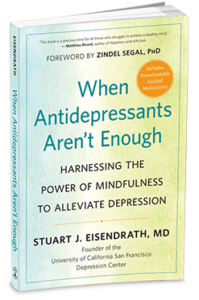The COVID-19 outbreak has had devastating morbidity and mortality rates. Just as important, however, are the levels of stress associated with both the disease as well as the strategies being used to mitigate it. Shelter-in-place and limited contacts with our usual social supports combine to add to our stress. It may be useful to differentiate two contributors to our stress; anxiety and fear. Fear is a basic survival mechanism to help us avoid dangerous situations. It helps us be on guard to be able to “fight or run”. Anxiety, on the other hand, is False Evidence the Appears Real. In the other words, anxiety is out of proportion to the realistic threat. In these days of turmoil, with a realistic threat all over the world, it is hard to sift out the difference between anxiety and realistic fears. Nonetheless it is possible to take steps to fortify our mental health.
One approach is to practice mindfulness techniques that can quiet the mind a bit and bring your attention to the here and now and less on potential future catastrophes. A simple approach is to sit quietly and close your eyes. Then bring your attention to your breath moving in and out of your nostrils. Just notice the air currents moving in and out. Then to focus your attention even more, begin counting your in-breaths from zero to ten. When your mind wanders from counting simply bring your attention back to counting the breaths. f you reach ten breaths go back to zero and count another series up to ten. Practicing this simple meditation can help shift your attention from COVID-19 and the economy to being in the present moment.
Another technique is to bring compassion towards others and yourself. A central aspect of compassion is realizing you share much with the other seven billion people in the world. You and your feelings are part of common humanity. No matter what feelings you are having, you can be sure that others are experiencing the same ones. That awareness can help lessen the sense of isolation that social distancing brings. You can also bring a sense of loving-kindness to your self and others. Research suggests it may be easier to start aiming the intentions of loving-kindness to others and then shift towards yourself. As Mark Twain put it, if you want to cheer yourself up, start by cheering someone else up first.
These techniques won’t hasten the epidemic’s end, but they may allow you to weather it with a bit more equanimity.
